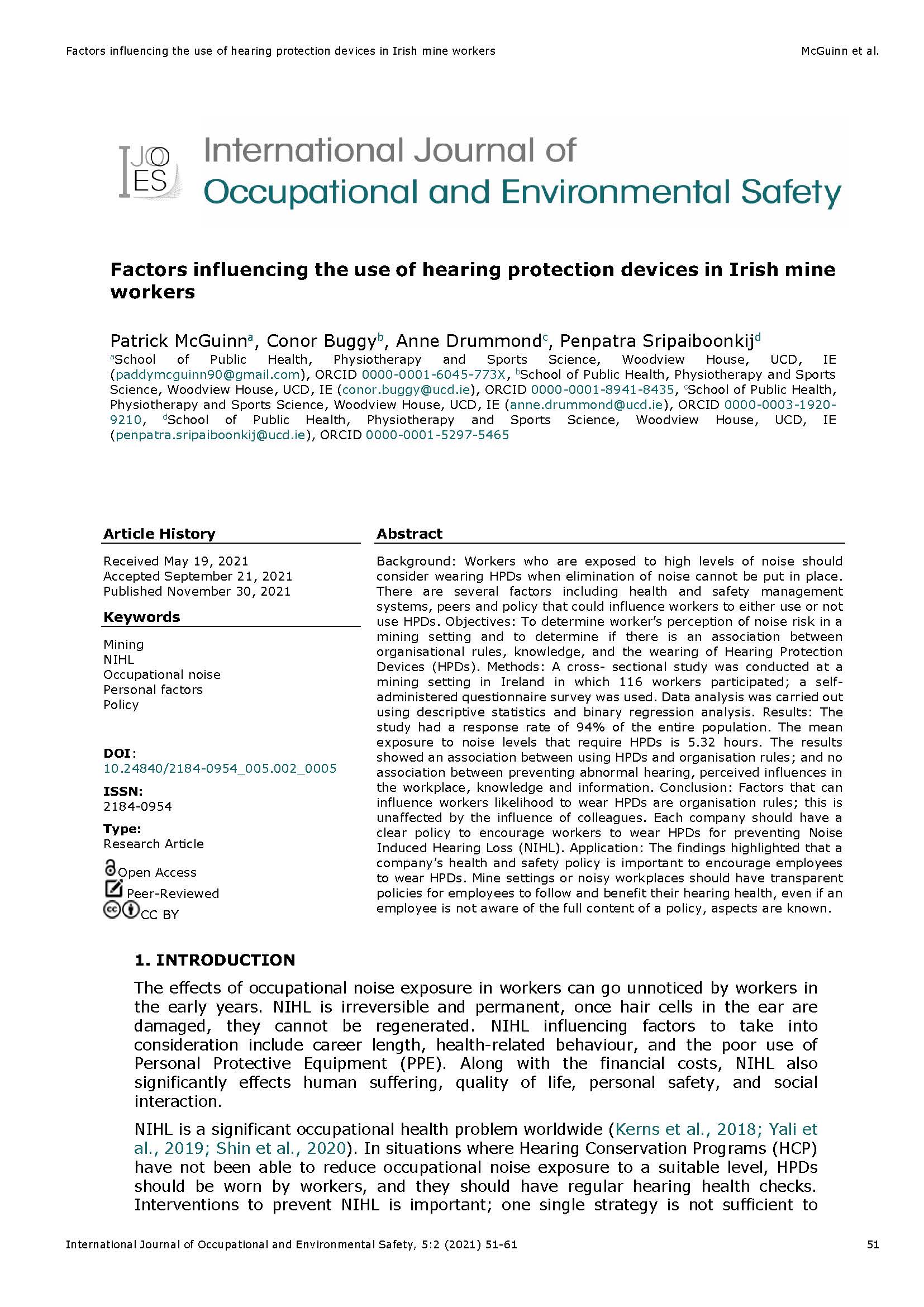Factors influencing the use of hearing protection devices in Irish mine workers (Article)
Main Article Content
Abstract
Background: Workers who are exposed to high levels of noise should consider wearing HPDs when elimination of noise cannot be put in place. There are several factors including health and safety management systems, peers and policy that could influence workers to either use or not use HPDs. Objectives: To determine worker’s perception of noise risk in a mining setting and to determine if there is an association between organisational rules, knowledge, and the wearing of Hearing Protection Devices (HPDs). Methods: A cross- sectional study was conducted at a mining setting in Ireland in which 116 workers participated; a self-administered questionnaire survey was used. Data analysis was carried out using descriptive statistics and binary regression analysis. Results: The study had a response rate of 94% of the entire population. The mean exposure to noise levels that require HPDs is 5.32 hours. The results showed an association between using HPDs and organisation rules; and no association between preventing abnormal hearing, perceived influences in the workplace, knowledge and information. Conclusion: Factors that can influence workers likelihood to wear HPDs are organisation rules; this is unaffected by the influence of colleagues. Each company should have a clear policy to encourage workers to wear HPDs for preventing Noise Induced Hearing Loss (NIHL). Application: The findings highlighted that a company’s health and safety policy is important to encourage employees to wear HPDs. Mine settings or noisy workplaces should have transparent policies for employees to follow and benefit their hearing health, even if an employee is not aware of the full content of a policy, aspects are known.
Article Details

This work is licensed under a Creative Commons Attribution 4.0 International License.

